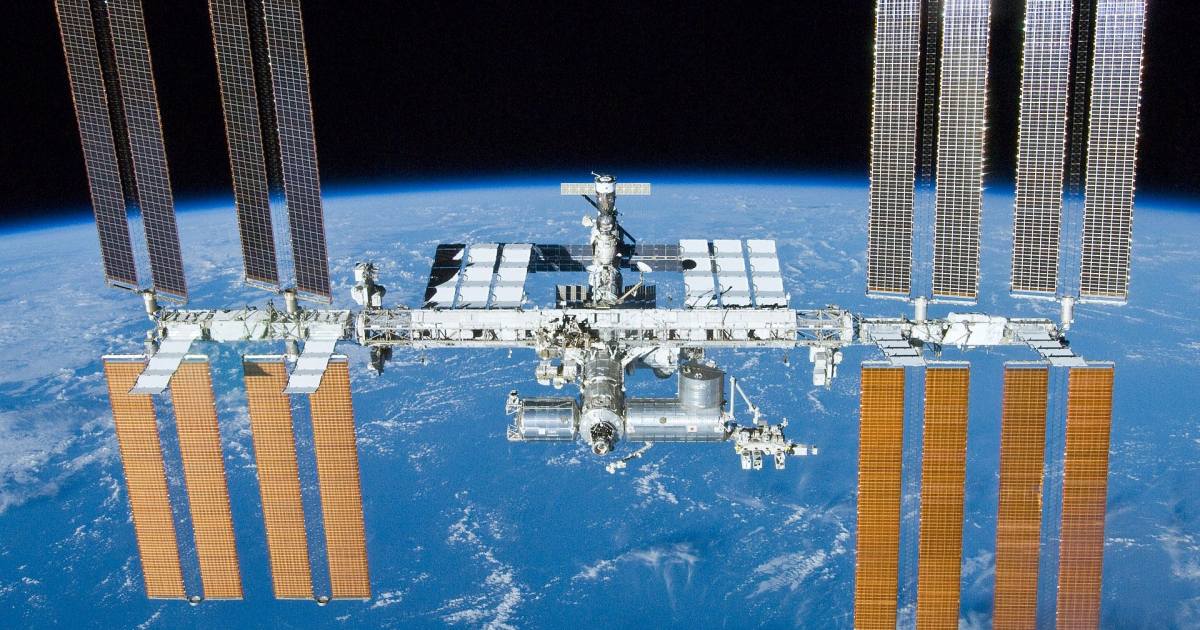
While the International Space Station’s solar arrays are still working pretty well, they are showing their age and NASA will start on an upgrade this year.
The ISS’s original pair of solar arrays have been operating continuously since December 2000, with additional array pairs delivered in September 2006, June 2007 and March 2009. Designed for a 15 year service life, the arrays’ performance is gradually degrading – which is expected whether a PV installation is in space or it’s solar panels on a rooftop here on Earth.
The eight current arrays are producing up to 160 kilowatts of power during orbital daytime. The ISS sees 16 sunrises and sunsets every day and 50 – 60 per cent of what the solar arrays generate is stored in the station’s batteries for use while the station isn’t exposed to sunlight.
NASA says it will be augmenting six of the eight existing power channels of the space station with new solar arrays, which will be larger versions of the Roll-Out Solar Array (ROSA) technology that was successfully tested back in 2017.
ROSA rolls out like a tape measure, using the energy stored in high-strain one-piece composite slit-tube booms that also provide the structural stiffness and strength.
The new solar arrays, which will sit in front of six of the current ones, will provide a total of 120kW of power. These will shade just over half of the length of the existing arrays, with the remaining uncovered pair and partially uncovered original arrays continuing to generate approximately 95 kilowatts of power. The 215kW total power will be approximately the amount available when the original arrays were first installed.
The solar arrays, provided by Boeing, Spectrolab and Deployable Space Systems (DSS), will be delivered to the ISS in pairs by the SpaceX Dragon cargo spacecraft during three resupply missions starting this year. Installing each solar array will require two spacewalks – one for preparation and the other for the actual installation.
ISS Battery System Upgrade
Last year, a multi-year effort to replace the ISS’s nickel-hydrogen batteries with lithium-ion energy storage continued and was nearly complete. All up, 24 new lithium-ion batteries and adapter plates will have replaced 48 nickel-hydrogen batteries. As far as I’m aware, there’s still one battery left to be replaced. In 2019, a lithium-ion battery failed after being installed and was replaced with one of the older nickel-hydrogen units. A replacement lithium-ion battery arrived at the ISS in January last year and that is yet to be fitted.
The new batteries are expected to be good for 60,000 cycles and ten years of service life, compared to the original Ni-H2 batteries’ design life span of 6.5 years. While the end of the ISS mission is officially 2024, there is a push to extend it to at least 2028.
Trivia: ISS’s current solar arrays contain 262,400 solar cells, cover an area of around 2,500 square meters and each “wing” spans 73 metres. The station’s electrical power system incorporates 12.9 kilometres of wiring.

 RSS - Posts
RSS - Posts



I didn’t think they were serious about extending the lifespan of the ISS. I thought it was a Mir suggestion.
I wonder what type of Solar Panels and Inverter they used on ISS? Is it on the list?
I really want a scalled version of this as come retirement the plan will be to tow a 5th wheel caravan with a Cybertruck. Now having something that can be rolled out like this for charging would be awesome.
Free fuel as far as I see it.